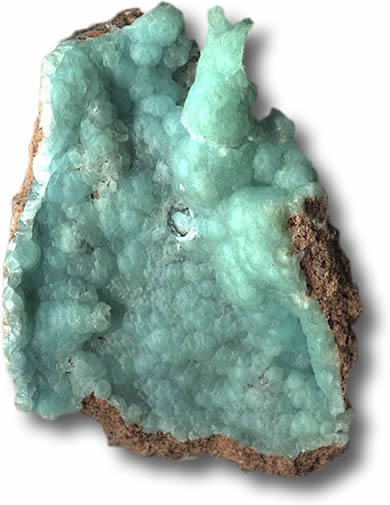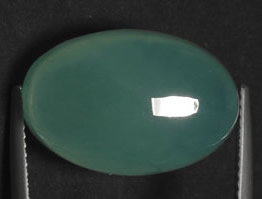Smithsonite Gemstones
Smithsonite is one of two zinc-containing minerals discovered by British chemist and mineralogist, James Smithson, in 1803. More precisely, Smithson discovered that a zinc-containing mineral known by the name calamine in the 18th century was in fact two separate minerals - zinc carbonate and zinc silicate. The zinc carbonate was named hemimorphite and the zinc silicate was named smithsonite in Smithson's honor.

Smithsonite Rough Stone
This was not Smithson's only claim to fame. Smithson was not only a important scientist, he was also a shrewd investor who amassed a considerable fortune during his lifetime. Though he had never visited the United States, his will stipulated that his wealth should go "to the United States of America, to found at Washington, an establishment for the increase and diffusion of knowledge among men". In 1846 the Smithsonian Institution was founded with Smithson's fortune.
Smithsonite and hemimorphite often have a similar appearance, with both occurring in blue, green or turquoise hues. However, smithsonite can also be found in pink. The two minerals have similar hardness (5 on the Mohs scale) but smithsonite has a significantly higher density of 4.00 to 4.65, compared to 3.30 to 3.50 for hemimorphite. In fact smithsonite is one of the denser gem materials, with a density higher than that of sapphire and ruby.

Smithsonite Cabochon
Smithsonite and hemimorphite also differ in their crystal systems. Smithsonite forms in the trigonal crystal system while hemimorphite forms orthorhombic crystals. Both minerals are usually found in aggregate form in nature, rather than as pure crystals.
Smithsonite occurs as a secondary mineral in the weathering or oxidation zone of zinc-bearing ore deposits. It also sometimes forms as replacement bodies in carbonate rocks. It is commonly found in association with willemite, hemimorphite, hydrozincite, cerussite, malachite, azurite, aurichalcite and anglesite.
Smithsonite deposits are found in Australia, Mexico, Namibia, Italy, Greece, Spain and the USA (New Mexico).
|